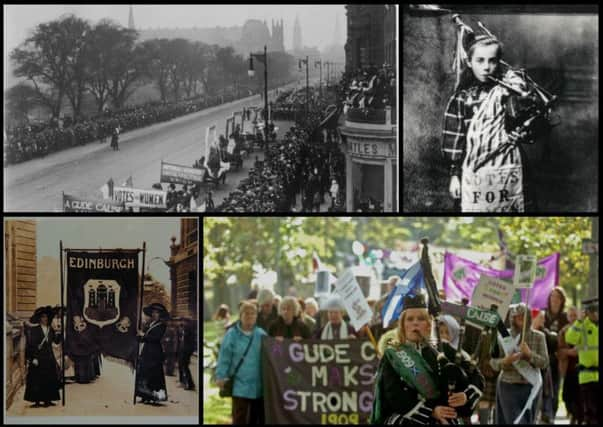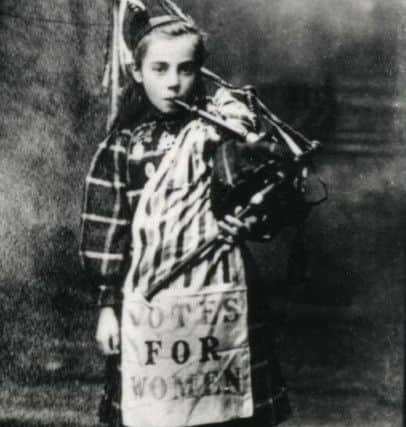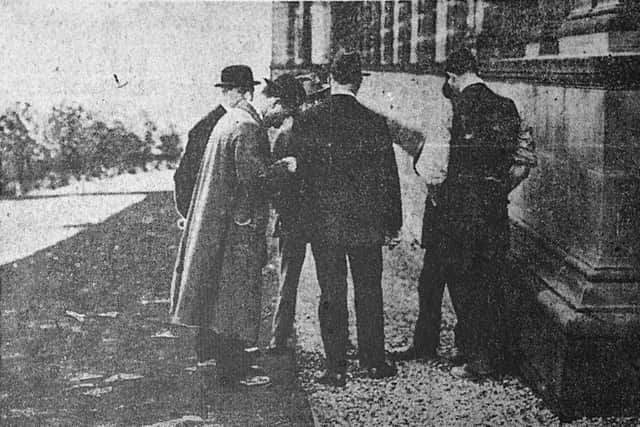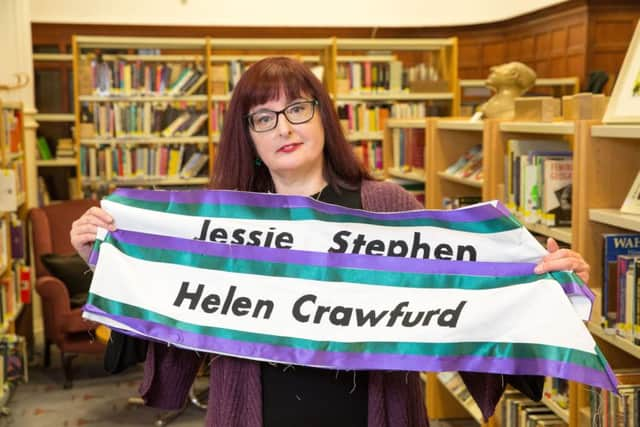Five landmark moments from Scotland's struggle for women's suffrage


The Representation of the People Act handed married or property owning women over the age of 30 the power to vote in elections. It was a watershed moment in a long fight that had been gathering momentum since the start of the century, only to be halted temporarily by the outbreak of the First World War.
In Scotland, as elsewhere in the United Kingdom, thousands of women risked their reputation, jobs, families and lives to support the cause.
Advertisement
Hide AdWe take a look at five landmark moments during the historic struggle.


WSPU demonstration, Edinburgh, 1909
On 9 October 1909 the Women’s Social and Political Union, which was led by Emmeline Pankhurst and her two daughters, took to the streets of Edinburgh for a mass demonstration. The march attracted thousands of suffragists and made headlines up and down the country. It was covered by The Scotsman the following Monday, though the report slightly undermined the event by labelling the overall response as ‘lacking enthusiasm’ and noting that ‘onlookers exhibited no other sentiment than that of mere curiosity’.
The youngest suffragette
One of the more notable activists at the 1909 WSPU march was 9-year-old Bessie Watson. Born in Edinburgh, Bessie took up the bagpipes as a small child in a bid to combat her tuberculosis. She marched along Princes Street and made waves as the country’s youngest supporter of the suffragettes movement. During the parade Bessie, with her distinctive ‘Votes For Women’ sash, played at intervals as she rode on a float beside a lady dressed as Isabella MacDuff, the Countess of Buchan - a 14th century heroine from Scotland’s Wars of Independence. “We were walking down Queensferry Street and we stopped at a shop window,” recalled Bessie years later. “It was the window of the WSPU. When we came out my mother and I were members of the WSPU and I was booked to play the pipes in the Historical Pageant in October. “They asked me because there I was, a girl doing something which they always associated with men.”


Bombing of the Royal Observatory
Although many suffragists condemned the use of any act of violence in their struggle, others saw it as necessary in underlining the swift need for change. On the night of 21 May 1913 an un-named assailant bombed the Royal Observatory atop Edinburgh’s Blackford Hill. Masonry was smashed, windows were shattered though none of the astronomical equipment was damaged. Blood was found at the scene, but no-one was ever charged for the attack, which Ralph Sampson, then Astronomer Royal for Scotland, labelled an “outrage”. A small fragment from the explosion is now kept as an artefact by the Royal Observatory.
Burning of Ayr Racecourse
Edinburgh was not the only place in Scotland to be targeted by the more militant suffragists. 1913 also witnessed the burning down of a stand at Ayr Racecourse. The culprit, suffragette Catherine Taylor, caused some £2000 worth of damage to the Western Meeting Club stand and her name became famous overnight. The firebomb attack came just two months before arguably the most high profile incident of the entire women’s suffrage movement, when Emily Davison made the ultimate sacrifice during the Epsom Derby, throwing herself in front of the King’s horse. The injuries she received were fatal. In a separate incident, the grandstand at Perth racecourse was also burned down, while back in Ayr, the cottage of national bard Robert Burns was narrowly saved a similar fate. In January 1914, Glasgow pair Ethel Moorhead and Dorothea Chalmers Smith were jailed for their part in firebombing across six public gardens in the city.


Marion Wallace Dunlop
Inverness suffragist Marion Wallace Dunlop goes down in history as the most famous of Britain’s suffragettes to go on hunger strike. She was a bold and vociferous supporter of the women’s suffrage movement and was no stranger to being arrested for her struggle. While imprisoned in 1909 Marion fasted for nearly 4 days, sparking her release. Hunger striking became an official WSPU policy as a result, though this soon culminated in the horrors of force feeding.